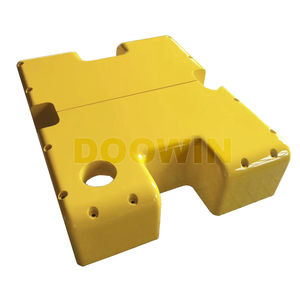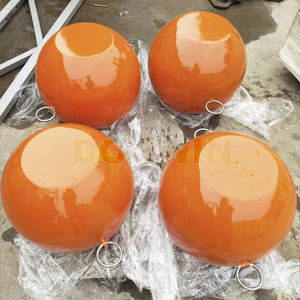
- Marinas
- Marina equipment
- Cable float
- Doowin Marine
Cable float foam-filled
Add to favorites
Compare this product
Characteristics
- Applications
- for cables
- Other characteristics
- foam-filled
Description
Subsea cable floats, also known as cable floats, are devices specifically designed to support and protect underwater cables, particularly those laid on the seabed. These cables can include telecommunications cables, power cables, and other types of subsea cables that are essential for various industries and applications. Here's a detailed explanation of subsea cable floats:
Function
Support and Protection: Subsea cable floats provide buoyancy to the cables, preventing them from lying directly on the seabed. This helps to protect the cables from damage caused by seabed abrasion, rock impacts, and other potential hazards.
Design
Buoyancy Materials: Subsea cable floats are typically made from high-density syntactic foam or other lightweight, buoyant materials. These materials provide excellent buoyancy while being durable and resistant to marine environments.
Shape and Size: The floats can vary in shape and size depending on the specific application and the cable's requirements. Common shapes include cylindrical, spherical, and other custom designs that optimize buoyancy and reduce drag.
Applications
Telecommunications: Subsea cable floats are widely used in supporting and protecting telecommunications cables that connect different countries and continents.
Power Transmission: They are also used in power cables that transmit electrical energy across underwater distances, such as between offshore wind farms and onshore power grids.
Oil and Gas: In the oil and gas industry, subsea cable floats support cables used in subsea drilling, production, and monitoring systems.
Catalogs
No catalogs are available for this product.
See all of Doowin Marine‘s catalogsExhibitions
Meet this supplier at the following exhibition(s):

*Prices are pre-tax. They exclude delivery charges and customs duties and do not include additional charges for installation or activation options. Prices are indicative only and may vary by country, with changes to the cost of raw materials and exchange rates.






